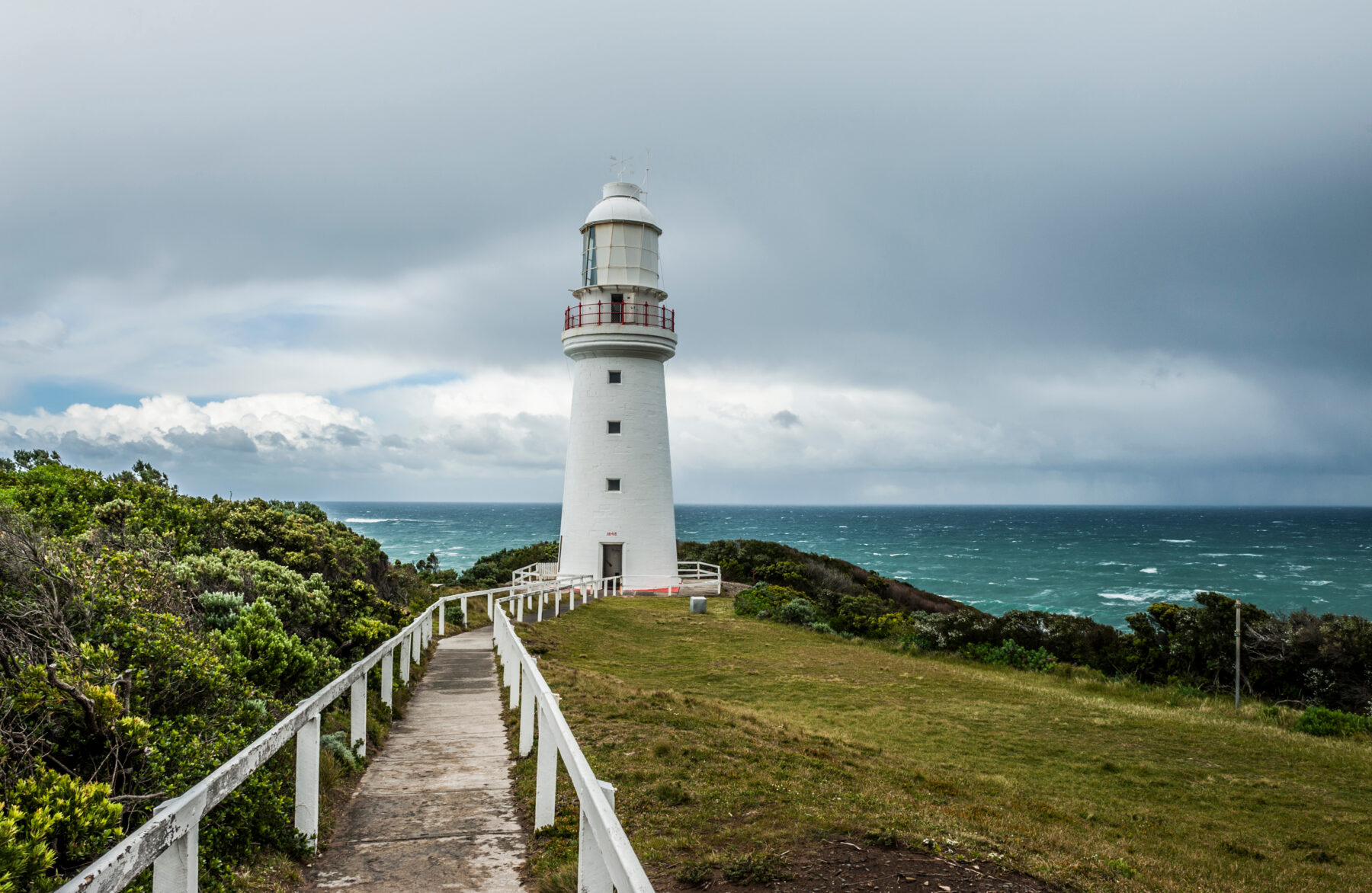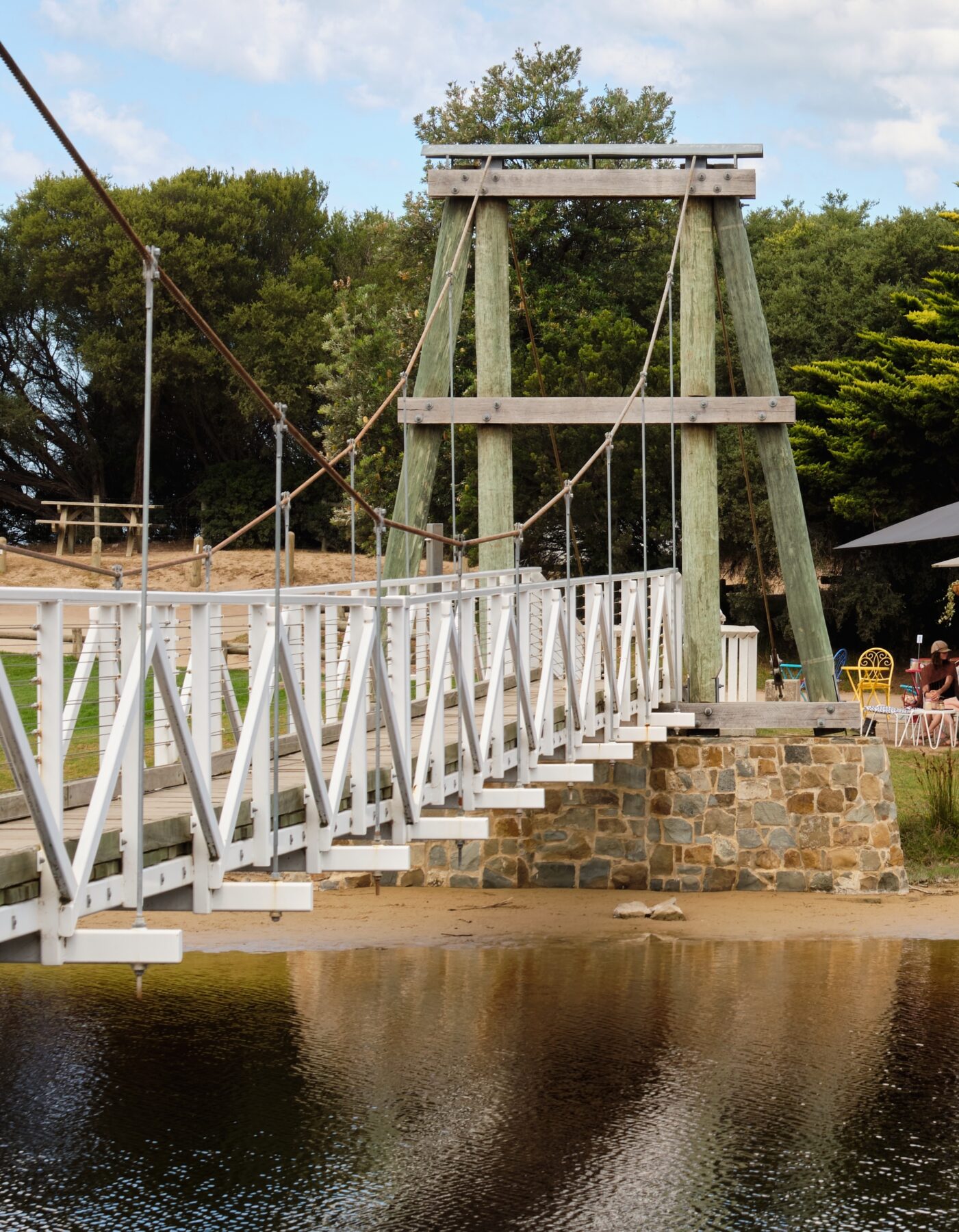Great Otway National Park

Great Otway National Park stretches from Torquay, along the Great Ocean Road and up through the Otways hinterland. The park’s northern reaches are typified by tall forests, ferny gullies, waterfalls and lakes, while in the south, the rainforest opens out to dramatic ocean. For thousands of years, the area has been a gathering, ceremonial and feasting place for the park’s traditional owners. Most visitors these days are drawn by hiking, paddling and biking.
The 100km Great Ocean Walk passes through the national park, with a choice of short or long tracks. The walk mostly hugs the Shipwreck Coast, named for the notorious passage between King and Flinders islands. Evidence can be found near places such as Point Franklin, where a ship’s anchor has become part of the rock at the beach.
In 1848 Cape Otway Lightstation was lit to mark the north-western entrance to Bass Strait. The oldest surviving lighthouse on mainland Australia, the tower was built in 10 months by 70 men, using stone transported 5km from the Parker River. The lighthouse was decommissioned in 1994 and replaced by a solar-powered beacon, but the area still provides the ideal vantage point for spotting any of the 25 migrating whale species.

The park can also be appreciated on a bike ride through the abundant roads and trails on offer. In the north of the park is Forrest, surrounded by mountain bike trails. With a combined total of 60km in trails (including a 12km loop trail), there are options to suit seasoned riders and families.
Aire River camping ground provides a starting point for kayakers to paddle downriver to the open ocean. Flat river sections are ideal for canoeing.
The Zipline Tour and Treetop Walk each offer different perspectives on the rainforest. The 1.9km Treetop Walk makes its way through the forest, culminating in a 600m-long, 30m-high canopy walkway. The Zipline Tour involves flying on a series of cables spanning from one platform to another, 30m above the forest floor. It is available to children over four years of age and of a minimum height of 105cm.
Great Otway is home to 372 fauna species, including the koala, eastern grey kangaroo and platypus. One wildlife attraction is the glow-worms, found at Melba Gully and accessed via the Madsen’s Track Nature Walk.
Looking to Lorne

Situated on the Great Ocean Road, with Bass Strait on one side, and Great Otway NP on the other, Lorne offers something for visitors all year round.
Its coastal setting ensures pristine white beaches to explore and swim at (Main Beach in Lorne is the only patrolled beach) in the summer. Migrating whales during May and September greet visitors in the cooler months, while the artistically minded tourist will be drawn to the town’s thriving art community.
Lorne is also home to the popular Falls Music and Arts Festival. The new Great Ocean Road Heritage Centre (found at the Lorne Visitor Information Centre) is a must-see, as are the 10 waterfalls within a 10-minute drive of town.




